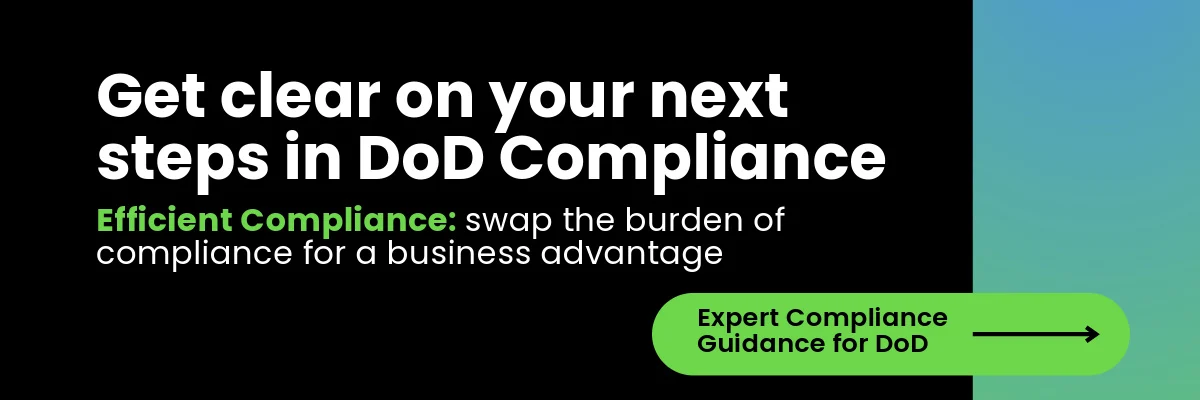Security Technical Implementation Guides (STIGs) are vital for protecting information systems in the Defense Industrial Base. These detailed documents, issued by the Defense Information Systems Agency (DISA), outline security settings for various platforms and devices. STIGs are the cornerstone of strong cybersecurity frameworks, offering specific, actionable steps for different compliance levels.
The significance of STIGs goes beyond DoD contractors. Forward-thinking commercial companies also adopt these guidelines to bolster their security. With over 20 STIGs available, they span a broad spectrum of technologies, including operating systems, applications, and network devices.
For instance, a single IIS web server might face up to 850 checks, while the Windows Server 2022 STIG has 273 checks. These figures underscore the comprehensive security considerations STIGs address. The bi-monthly release schedule ensures that security advice stays current with emerging threats.
Key Takeaways
- STIGs provide standardized security configurations for various IT systems
- DISA releases STIGs bi-monthly to keep security guidance current
- STIGs are mandatory for DoD contractors and beneficial for commercial entities
- They cover a wide range of technologies with detailed security checks
- STIGs form the foundation of robust cybersecurity frameworks
A STIGs Overview
Security Technical Implementation Guides (STIGs) are essential for DoD cyber defense strategies. They provide secure configurations for various platforms, boosting system resilience against threats. The DoD workforce depends on STIGs to keep its vast technological landscape secure.
STIGs are vital in the Risk Management Framework (RMF) process. Organizations handling sensitive information use STIG evaluations to get an Authority to Operate (ATO). This involves implementing security controls and submitting documentation for review after system hardening.
The Defense Information Systems Agency (DISA) develops and maintains STIGs. They ensure STIGs meet the unique risks and requirements of specific technologies. This tailored approach makes STIGs invaluable for the DoD cyber community and beyond.
| STIG Severity Category | Description | Example |
|---|---|---|
| CAT 1 (High) | Severe vulnerabilities with immediate consequences | Unpatched remote code execution vulnerabilities |
| CAT 2 (Medium) | Significant threats leading to serious situations | Weak passwords |
| CAT 3 (Low) | Settings weakening overall security posture | Open file shares with unrestricted access |
STIGs complement other security frameworks like FedRAMP and CMMC. They serve as an implementation guide for organizations aiming to meet these standards. The cyber exchange facilitated by STIGs fosters workforce innovation, promoting a culture of security awareness across industries.
Where STIGs are used in the Defense Industrial Base and Beyond
Security Technical Implementation Guides (STIGs) are vital for protecting defense information systems. Initially created for the U.S. Department of Defense (DoD), their use has expanded significantly. Today, the cyber workforce in various sectors values STIGs for boosting security.
Companies that work with the DoD must adhere to STIGs for secure data exchange. This necessity has led to their widespread adoption in the defense industrial base. The workforce innovation directorate highlights STIGs' role in maintaining strong cybersecurity practices.
STIGs are increasingly applied in:
- Critical infrastructure
- Government agencies
- Commercial enterprises
- Educational institutions
Entities handling sensitive data or operating in regulated sectors should consider STIGs. These guidelines offer a standardized method for system hardening. This approach significantly lowers the risk of cyber attacks.
Recently, DISA released the Ciaran Salas DISA update, enhancing STIG capabilities. This update underscores the commitment to addressing emerging vulnerabilities and cyber threats. It ensures security measures remain effective in diverse technological environments.
| Sector | STIG Application |
|---|---|
| Defense | Mandatory for DoD collaboration |
| Government | Critical infrastructure protection |
| Education | Data protection and cybersecurity training |
| Commercial | Enhanced overall security posture |
STIGs Advantage in Healthcare, Higher Education, SLED and Beyond
Security Technical Implementation Guides (STIGs) bring significant benefits to sectors beyond defense. Healthcare, higher education, and State, Local, and Education (SLED) environments can enhance their security using STIGs.
In healthcare, STIGs protect sensitive patient data. Higher education institutions use them to safeguard research information. SLED environments benefit from improved risk management. By implementing STIGs, these sectors can streamline compliance with industry regulations and bolster their cybersecurity strategies.
The control correlation identifier (cci) facilitates STIG adoption across diverse environments. Automation tools speed up the process, making it easier to guide the defense information principles into non-defense sectors. Organizations can access a comprehensive document library to tailor STIGs to their specific needs.
- Healthcare: Protects patient data
- Higher Education: Safeguards research information
- SLED: Improves risk management
STIGs play a crucial role in system hardening, helping identify and implement security controls to minimize vulnerabilities. Organizations handling sensitive information must complete the Risk Management Framework (RMF) process for an Authority to Operate (ATO). This process includes STIG evaluations and documentation submission, significantly reducing the likelihood of successful cyber attacks.
Sectors like Energy, Manufacturing, Architecture, Education, and Aerospace have benefited from STIG implementation. A proactive cybersecurity strategy incorporating STIG evaluations leads to a more robust security posture across different industries.
STIG Documentation and Resource Management
DISA updates STIGs every quarter, making them available on their official website in XML format as Strategic Requirements Guides (SRG). The SRG/STIG mailing list keeps you informed about new releases and updates. This resource is vital for staying current with the latest security guidelines.
The DoD Annex for NIAP Protection Profiles offers additional guidance for implementing STIGs in specific contexts. It's a valuable tool for understanding how to apply STIGs to various systems and environments.
For cloud-based systems, the DoD cloud computing security guidelines provide essential information. These resources help ensure your cloud implementations meet strict DoD security standards.
| Resource | Purpose | Update Frequency |
|---|---|---|
| STIG XML Files | Detailed security configurations | Quarterly |
| SRG/STIG Mailing List | Updates and notifications | As needed |
| DoD Cloud Security Guide | Cloud-specific guidelines | Periodically |
To address common concerns, DISA provides a frequently asked questions - FAQs section. This resource clarifies implementation challenges and misconceptions, helping you navigate STIG compliance more effectively.
Efficient management of STIG documentation is crucial for maintaining compliance. Regular reviews and updates of your STIG implementation ensure ongoing security effectiveness and alignment with the latest DoD requirements.
Understanding DISA STIGs: Core Components and Purpose
Security Technical Implementation Guides (STIGs) are vital for protecting IT systems. They detail specific security settings and configurations for various technologies. The Defense Information Systems Agency (DISA) develops and maintains STIGs to ensure robust cybersecurity across defense networks.
Defining Security Technical Implementation Guides
STIGs offer a standardized method for system hardening. They reduce vulnerabilities through software and hardware solutions. By implementing STIGs, organizations can significantly decrease the risk of successful cyber attacks. These guides serve as a roadmap for achieving compliance with DoD security regulations.
The Role of DISA in STIG Development
DISA creates and updates STIGs regularly. They release new versions on a quarterly release schedule and summary. This ensures that security measures remain current against evolving threats. DISA also maintains SRG / STIG library compilations, offering comprehensive resources for IT professionals.
Core Security Requirements and Objectives
STIGs address key security objectives through a tiered compliance model:
- CAT 1 (High severity): Targets critical vulnerabilities that could lead to immediate system breaches
- CAT 2 (Medium severity): Addresses significant threats that may escalate risks over time
- CAT 3 (Low severity): Focuses on settings that strengthen overall security posture
Implementation often involves using group policy objects to apply STIG settings across networks. SRG / STIG viewing tools help administrators navigate and apply these complex guidelines effectively.
STIG Implementation Framework and Best Practices
Ensuring STIG compliance is vital for entities within the DoD network or dealing with DoD data. The process aligns with the Risk Management Framework, notably NIST 800-37. Achieving STIG compliance requires a structured method and established practices.
Begin by ranking vulnerabilities by their severity. Tackle Category I (the most critical) first, then Category II and III. This method adheres to risk management standards, ensuring high-priority issues are addressed swiftly.
Establish a comprehensive change control procedure to sustain STIG compliance. This involves regular audits, scans, and manual checks. Leveraging automation tools can enhance this effort, offering automated compliance checks for container images and SCAP-based scans.
Consider the lifecycle of your systems, including sunset products, in your STIG implementation strategy. Participate in the vendor STIG development process to meet your unique requirements. This proactive stance aids in better-managing compliance levels.
STIG compliance is a continuous endeavor, not a singular task. Allocate resources prudently, encourage teamwork among IT, security, and compliance teams, and embrace continuous monitoring for proactive risk management. Adhering to these guidelines will help solidify and uphold robust STIG compliance within your organization.
Using Federal ZenGRC for STIG Compliance
Federal ZenGRC offers comprehensive capabilities for organizations navigating complex compliance requirements. While designed to focus on more than STIGs, the platform effectively supports STIG implementation through several key functions. Organizations can leverage Federal ZenGRC to map and track STIG controls within its unified framework, significantly streamlining the process of collecting and managing compliance evidence. The system enhances audit readiness for STIG-related assessments, helping teams maintain continuous compliance posture. Notably, as a FedRAMP Moderate Ready solution, Federal ZenGRC provides valuable support for federal agencies and contractors working to achieve and maintain FedRAMP compliance—a process that frequently incorporates STIG requirements. This combination of capabilities makes ZenGRC a versatile governance, risk, and compliance tool for organizations navigating federal security standards.
Compliance Levels and Risk Management in STIGs
STIGs are vital for system hardening, enhancing the security of evaluated technologies. The DISA STIGs use a tiered compliance model with three Severity Category Codes (CAT). These codes categorize vulnerabilities, helping system administrators to focus their security efforts and resource allocation.
CAT I: High-Severity Security Controls
CAT I vulnerabilities can cause immediate and severe consequences, like data breaches and system failures. These include unpatched remote code execution vulnerabilities and misconfigured firewalls. It's essential to address these high-severity security configurations to ensure strong system protection.
CAT II: Medium-Severity Requirements
CAT II vulnerabilities pose substantial threats that can escalate into severe issues. Weak passwords and outdated software with unpatched vulnerabilities fall into this category. Implementation guides for STIGs highlight the need to tackle these medium-severity issues to prevent security breaches.
CAT III: Low-Severity Guidelines
Though less critical, CAT III vulnerabilities can still compromise overall security, offering entry points for attackers. Examples include open file shares with unrestricted access and insecure wireless networks. Best practices for STIG implementation stress the importance of addressing these vulnerabilities for a comprehensive security strategy.
By adopting this tiered approach, organizations can prioritize the most critical vulnerabilities while maintaining a wide range of security controls. Regular updates to STIGs keep them effective against new threats. This makes them indispensable for system administrators in managing cybersecurity risks.
Key Components of Security Technical Implementation Guides
Security Technical Implementation Guides (STIGs) are detailed prescriptive documents that form the backbone of cybersecurity practices. They contain crucial elements that work together to create a robust security framework.
Configuration Management Documentation
STIGs provide specific instructions for setting up secure systems. These documents outline precise configurations to minimize vulnerabilities and risk. By following these guidelines, you can establish a strong baseline for your IT infrastructure.
Audit Trail Requirements
Effective STIGs include comprehensive audit trail requirements. These ensure accountability and aid in incident response. By maintaining detailed logs, you can track system changes and user activities, supporting your efforts in sustaining STIG compliance.
Change Control Procedures
STIGs incorporate best practices for managing system modifications securely. These procedures help maintain the integrity of your systems while allowing necessary updates. This balance is crucial for a tiered compliance model, ensuring security at every level of your organization.
| STIG Component | Purpose | Impact on Security |
|---|---|---|
| Configuration Management | Secure system setup | Reduces vulnerabilities |
| Audit Trail | Activity tracking | Enhances accountability |
| Change Control | Managed updates | Maintains system integrity |
By integrating these key components, you create a comprehensive approach to cybersecurity. This strategy not only addresses current threats but also establishes a foundation for ongoing security improvements in your dynamic IT environment.
Tools and Technologies for STIG Compliance
STIG compliance demands powerful tools for effective implementation of standardized security configurations. The STIG Viewer is a crucial resource for managing these security guides. Its latest version, STIG Viewer 3.5, was released in February 2025. It brings enhanced features for managing IT security guides.
This new version introduced significant improvements:
- JSON file format for checklists, replacing XML
- HTML and CSV export options with SRGID fields
- Automatic filtering of empty checklist headers
- STIG version display in multiple locations
Automated scanning tools are vital for STIG implementation. The Security Content Automation Protocol (SCAP) and its implementations help assess systems against STIG requirements. Configuration management tools like Puppet ensure compliance by checking system settings every 30 minutes.
| STIG Component | Statistic |
|---|---|
| Available DISA STIGs | 490+ |
| Windows 10 STIG Recommendations | 257 |
| Typical Compliance Monitoring Frequency | Every 30 minutes |
| Minimum Password Length | 15 characters |
| Maximum Password Lifetime | 60 days |
These tools simplify the journey to STIG compliance. They assist organizations in meeting the strict security standards of standardized security configurations.
Integration with Federal Security Standards
STIGs are essential for aligning with federal security standards. They act as a roadmap for achieving compliance with DoD security regulations. By integrating STIGs with other frameworks, organizations can build a strong cybersecurity posture. This meets various regulatory requirements.
FedRAMP Alignment
STIGs complement FedRAMP by offering specific security guidelines for cloud systems. This alignment makes it easier to meet government security requirements. It reduces administrative overhead and ensures consistent secure configuration standards.
CMMC Framework Integration
The Cybersecurity Maturity Model Certification (CMMC) framework benefits from STIG integration. STIGs provide detailed network security protocols to help achieve CMMC maturity levels. This synergy enhances cybersecurity best practices for defense contractors.
NIST Guidelines Correlation
STIGs closely align with NIST guidelines, especially the NIST Special Publication 800 series. For instance, the Nutanix AOS STIG aligns with NIST 800-53 controls. This ensures compliance with strict security hardening requirements. It streamlines the implementation of secure configuration standards across federal agencies and their partners.
Automated STIG Validation and Monitoring
Automated STIG validation simplifies compliance across various sectors, including corporate cybersecurity, higher education, and healthcare. Tools like Ansible playbooks, available through DISA's Supplemental Automation Content, facilitate quick STIG check remediation.
Integrating STIG validation into CI/CD pipelines ensures security at every development stage. This method is particularly beneficial for FedRAMP and CMMC compliance, especially in sensitive areas like healthcare systems.
Real-time monitoring tools, such as SIEM and SOAR platforms, keep STIG compliance up to date. These systems are vital for higher education institutions managing complex IT infrastructures.
| STIG | Last Update | Next Release |
|---|---|---|
| Active Directory Domain | November 30, 2018 | - |
| Active Directory Forest | - | September 13, 2024 |
| Adobe Acrobat Pro DC | November 30, 2018 | - |
| Adobe Acrobat Reader DC | July 26, 2021 | January 28, 2025 |
Tools like SonarQube integrate STIG security requirements into continuous code scanning. This ensures software meets strict security standards, essential for maintaining strong corporate cybersecurity postures.
While automation boosts efficiency, human oversight is still crucial. Regular updates to automation scripts and addressing setup complexities are key challenges in implementing automated STIG validation and monitoring.
Common Implementation Challenges and Solutions
Implementing Security Technical Implementation Guides (STIGs) poses significant challenges for many organizations. These guides are essential for meeting DoD contractor requirements and enhancing cybersecurity. However, several obstacles frequently emerge during the implementation process.
Technical Hurdles
One major challenge is the technical complexity of STIGs. They demand a profound understanding of system lockdown and defense in depth. Many organizations face difficulties in applying these guidelines across various IT environments. To address this, automated STIG tools can be invaluable. They greatly reduce the time required for manual evaluations and ensure the consistent application of security controls.
->Qualified implementers can help ensure that you approach the detail required by STIGs effectively
Resource Constraints
Limited resources often hinder STIG implementation. Smaller security teams may find it challenging to manage continuous monitoring and regular audits. A viable solution is to prioritize STIG controls based on risk. Start with high-severity (CAT 1) vulnerabilities, such as unpatched remote code execution flaws or misconfigured firewalls. This method effectively manages resources while addressing critical security gaps.
Integrating STIGs within the GRC framework can help ensure that priority is placed on adequate resources.
Compliance Maintenance
Maintaining STIG compliance over time is another significant challenge. STIGs are updated frequently to address new threats, necessitating ongoing efforts to remain compliant. To overcome this, integrate STIG requirements into your CI/CD pipeline. Tools like SonarQube can scan code for STIG compliance, identifying issues early in development. This approach saves time and minimizes the risk of non-compliance in production environments.
FAQ
What are Security Technical Implementation Guides (STIGs)?
STIGs are detailed blueprints by the Defense Information Systems Agency (DISA) for securing systems, software, and network devices. They ensure standardized security across various technologies. System administrators and security experts follow these guides to protect against vulnerabilities and boost security.
Who uses STIGs?
The U.S. Department of Defense (DoD) and the Defense Industrial Base mainly use STIGs. But, they're also adopted by critical infrastructure, government agencies, and commercial sectors. Healthcare, higher education, and State, Local, and Education (SLED) environments also benefit from them.
How do STIGs relate to other security frameworks like FedRAMP and CMMC?
STIGs work alongside other federal security standards. They align with FedRAMP for cloud security in government systems. They also help achieve CMMC maturity levels and support NIST guidelines for better cybersecurity.
What are the compliance levels in STIGs?
STIGs have a tiered compliance model with three levels: CAT I (high-severity), CAT II (medium-severity), and CAT III (low-severity). These levels reflect different risks and potential impacts of vulnerabilities. This helps organizations focus their security efforts.
How can organizations implement STIGs effectively?
Effective STIG implementation requires a structured approach from assessment to continuous monitoring. Prioritize requirements based on risk, integrate STIGs into existing security processes, and use automation tools. Regular updates and ongoing monitoring are key to maintaining compliance.
What tools are available for STIG compliance?
Tools for STIG compliance include automated scanning tools like SCAP, configuration management tools (e.g., Ansible, Puppet, Chef), and vulnerability management platforms. There are also specialized STIG viewer applications and SIEM systems.
How can automation be used in STIG validation and monitoring?
Automation aids in STIG compliance through scripting languages, configuration management tools, and STIG automation platforms. These can be integrated into CI/CD pipelines and used with SIEM and SOAR platforms. This ensures continuous monitoring and real-time security posture visibility.
What are the key components of Security Technical Implementation Guides?
STIGs include configuration management documentation, audit trail requirements, and change control procedures. These elements form a comprehensive security framework. They provide detailed instructions for secure system setups and ensure accountability.
Where can I find STIG documentation and resources?
DISA offers STIG documentation and resources. Key resources include the SRG/STIG mailing list, DoD Annex for NIAP Protection Profiles, and guidance on DoD cloud computing security. DISA also provides STIG viewing tools and answers frequently asked questions about implementation.
What are common challenges in STIG implementation?
Challenges include technical hurdles in applying complex configurations and resource constraints. Maintaining compliance over time as systems and threats evolve is also a challenge. Solutions involve automation, risk-based prioritization, and robust change management processes.





